Plastic is an important organic synthetic polymer material widely used in various industries such as injection molding manufacturing and daily necessities.
However, how can we quickly differentiate between various types of plastic materials in real life?
In the content below, we will detail the primary methods for distinguishing plastic materials. Let’s learn this “skill” together!
1.Identification By Symbol
The six commonly used types of plastics can be identified by their recycling symbols. These symbols are usually found at the bottom of the container.
In China, the symbol is a two-digit number with a leading “0”, while foreign symbols are a single digit without the “0”.
However, the number that follows represents the same type of plastic.
Products manufactured by formal factories all bear this symbol.
By referring to the recycling symbol, the specific type of plastic can be accurately determined.
Distinguishing the types of plastics according to the recycling symbols should be considered the simplest method of differentiation.
It doesn’t necessitate an understanding of the specific properties and differences of the plastic materials; the distinction can be made clearly and straightforwardly.
Specific examples are as follows:
Plastic Name | Code | Abbreviation |
Polyester | 01 | PET/PETG |
High Density Polyethylene | 02 | HDPE/PE-HD |
Polyvinyl chloride | 03 | PVC/V |
Low Density Polyethylene | 04 | LDPE/PE-LD |
Polypropylene | 05 | PP |
Polystyrene | 06 | PS |
Other plastics | 07 | Other |
By understanding these plastic recycling symbols, we can categorize plastics more effectively and choose the appropriate method of recycling.
This helps in reducing the environmental impact of plastic waste and promotes sustainable development.
At the same time, it also reminds us to select products that meet environmental standards when purchasing and using plastic items.
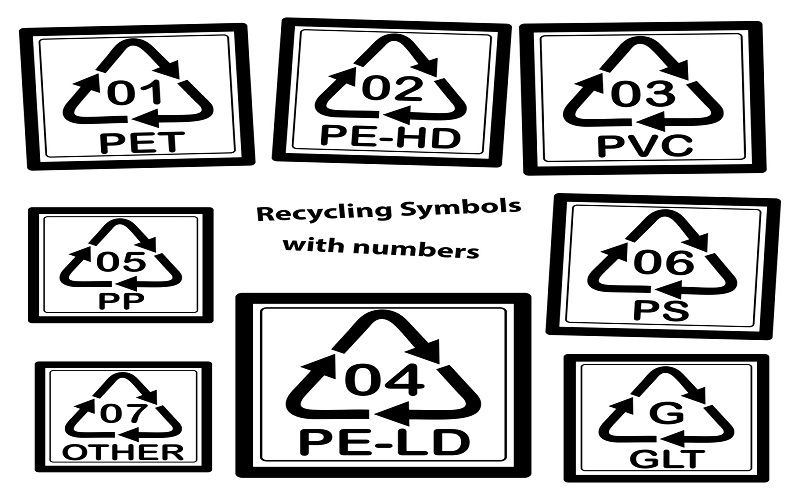
2.Appearance Recognition
Each type of plastic has its own characteristics, including color, luster, transparency, and hardness, which all vary.
By using our eyes and touch to obtain the appearance characteristics of plastic materials, such as shape, transparency, color, gloss, hardness, and elasticity, we can identify the type to which they belong.
The appearance characteristics of several commonly used types of plastics are as follows:
Polypropylene (PP): When uncolored, it appears as a white, semi-transparent, waxy substance.
Polypropylene plastic feels quite smooth to the touch, leaves no mark when scratched, can be bent without breaking, and has good tensile strength and rigidity.
Polyethylene (PE): The raw material is a white powder or transparent particulate resin.
It has a wax-like smooth touch, shows scratch marks, is soft and stretchable, can be bent but breaks easily.
Nylon (PA): Appears milky white and gel-like with a hard surface that feels warm to the touch and does not break when lightly tapped.
Polycarbonate (PC): Generally a white crystalline powder or light yellow, transparent solid.
It feels hard, offers significant resistance when bent, is impact-resistant, and has strong toughness.
Acrylonitrile Butadiene Styrene (ABS): Appears off-white or cream-colored, amorphous, opaque, and lacks luster. The material is tough, hard, and not easily broken.
Polymethyl Methacrylate (PMMA): Looks as clear as transparent glass, can be freely bent when heated to 120°C, is workable by hand, and is hard and not easily shattered.
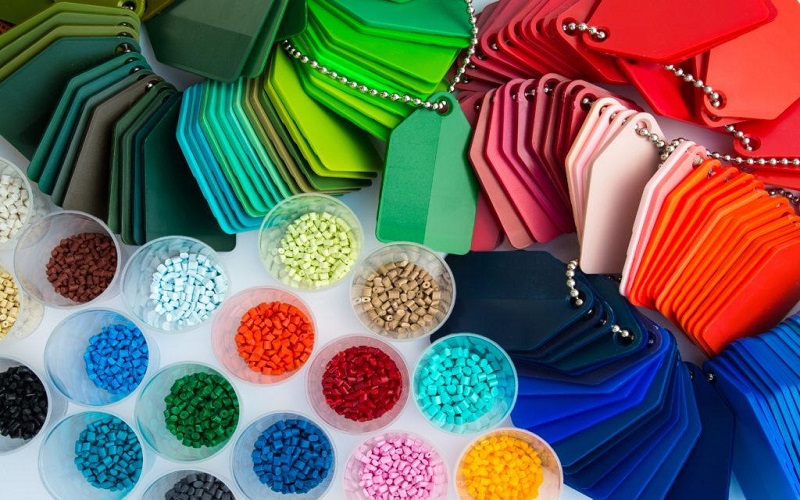
3.Combustion Method
Most plastic materials are capable of burning, and due to differences in their structures, they exhibit distinct combustion characteristics.
The combustion method primarily relies on the identification of the plastic based on the ease of burning, odor, flame characteristics, and changes in the state of the plastic during combustion.
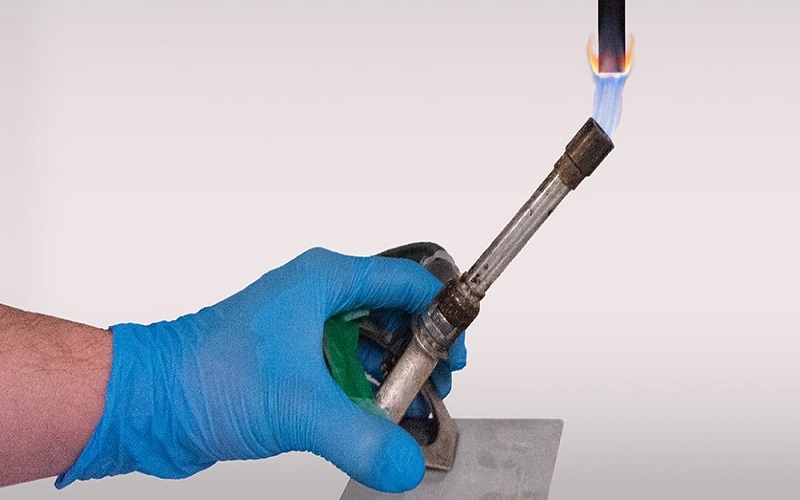
Common Plastics Combustion Characteristics | ||||
Name | Combustion Behavior | Flame Characteristics |
Odor | State Change of the Plastic |
PP | Burns readily | Yellow at the top, blue at the bottom | Petroleum smell | Melts and drips |
PE | Burns readily | Yellow-orange with blue edges | Paraffin smell | Melts, drips, continues to burn with no smoke |
PA | Burns slowly | Blue with yellow tips | Smells like burning wool or nails | Melts, drips, bubbles |
PC | Burns slowly | Bright yellow | Sweet, fruity, unpleasant | Softens, melts, bubbles, chars |
PMMA | Burns readily | Pale yellow with white top, crackling sound | Fruity scent, rotten vegetable smell | Dissolves, melts, slight charring |
4.Density Identification
The density of different types of plastics varies, leading to different sinking and floating behaviors in water and other solutions.
Therefore, using different solutions can differentiate between various types.
Common Plastics |
Density (g/cm3) | Behavior in Different Solutions | ||
|
| Water (1.0) | Saturated Sodium Chloride Solution (1.18) | Saturated Calcium Chloride Solution (1.27) |
PA | 1.14 | Sink | Float | Float |
PS | 1.05 | Sink | Float | Float |
PP | 0.9-0.91 | Float | Float | Float |
PE | 0.94-0.96 | Float | Float | Float |
PC | 1.20-1.25 | Sink | Sink | Float |
PVC | 1.38-1.46 | Sink | Sink | Sink |
PET | 1.31-1.70 | Sink | Sink | Sink |
ABS | 1.05 | Sink | Float | Float |
▲Note: For pure material, modified plastic, due to the density difference of additives, this method may not be applicable.
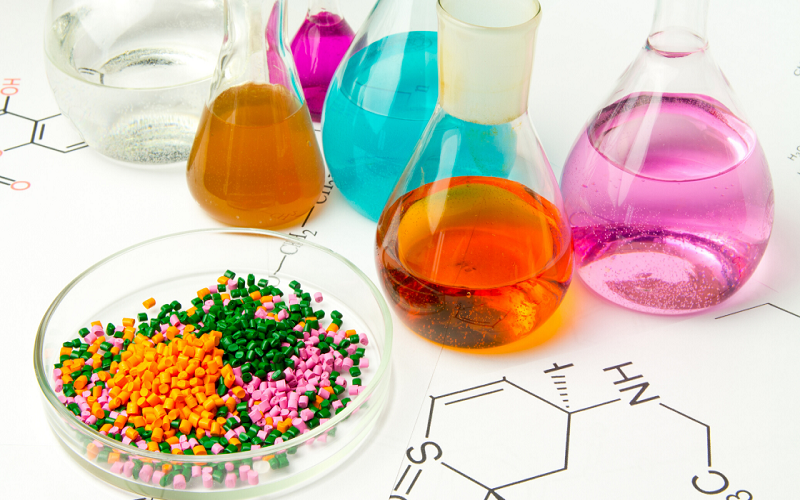
5.Solvent Treatment Method
Thermoplastic materials will swell when exposed to solvents but generally do not dissolve in cold solvents. In hot solvents, some thermoplastics will dissolve, such as polyethylene in xylene.
In contrast, thermosetting plastics do not dissolve in solvents and typically do not swell or only swell slightly. Elastomers are not soluble in solvents, but they usually do undergo swelling.
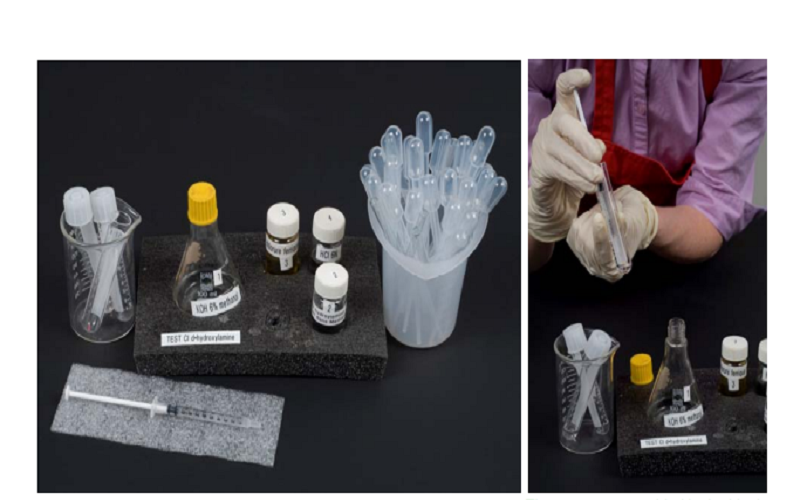
Solubility of Plastic | ||
Polymer | Solvent | Non-Solvent |
Polyethylene (PE) | o-Dichlorobenzene①, Trichlorobenzene① | Acetone, Ether |
Poly-1-butene | Decane①, Decahydronaphthalene① | Lower Alcohols |
Atactic Polypropylene | Hydrocarbons, Isoamyl Acetate | Ethyl Acetate, Propanol |
Polyisobutylene (PIB) | Hexane, Benzene, Carbon Tetrachloride, Tetrahydrofuran | Acetone, Methanol, Methyl Acetate |
Polybutadiene | Aliphatic and Aromatic Hydrocarbons |
|
Polystyrene (PS) | Benzene, Toluene, Chloroform, Cyclohexanone, Butyl Acetate, Carbon Disulphide | Lower Alcohols, Ether (swells) |
Polyvinyl Chloride (PVC) | Tetrahydrofuran, Cyclohexanone, Acetone, Dimethylformamide | Methanol, Acetone, Heptane |
6.Heat Identification Method
Different types of plastics have varying ranges of temperature tolerance, and their characteristics when heated also differ. By applying heat, we can assist in discerning the types of plastics.
Thermoplastic materials soften when heated, melt easily, and become transparent when molten. Often, they can be drawn into threads from the melt and are typically easy to heat seal.
Thermosetting plastics, when heated up to the point just before chemical decomposition, maintain their original hardness and do not soften, are dimensionally stable, and carbonize at the decomposition temperature.
Elastomers, when heated, do not flow until they reach the temperature of chemical decomposition, at which point the material decomposes and carbonizes.
Common Thermoplastic Softening or Melting Temperature Ranges
Type of Plastic | Softening or Melting Range(°C) |
Polystyrene | 70~115 |
Poly-1-Butene | 125~ 135 |
Plexiglass | 126~ 160 |
Polypropylene | 160~170 |
Polyacrylonitrile | 130~ 150(soften) |
Nylon 6 | 215~225 |
Polycarbonate | 220~ 230 |
Nylon 66 | 250~260 |
7.Pyrolysis Test Identification
The pyrolysis test identification method involves heating the plastic to its pyrolysis temperature in a pyrolysis tube, and then using litmus paper or PH test paper to test the PH of the evolved gases for identification purposes.
If the gas turns litmus paper red, the plastic could be PVC, which releases acidic gases.
If the litmus paper turns blue, it might be a plastic like polyethylene, which can release basic gases.
If there’s no change, the plastic might be a type that releases neutral gases upon pyrolysis.
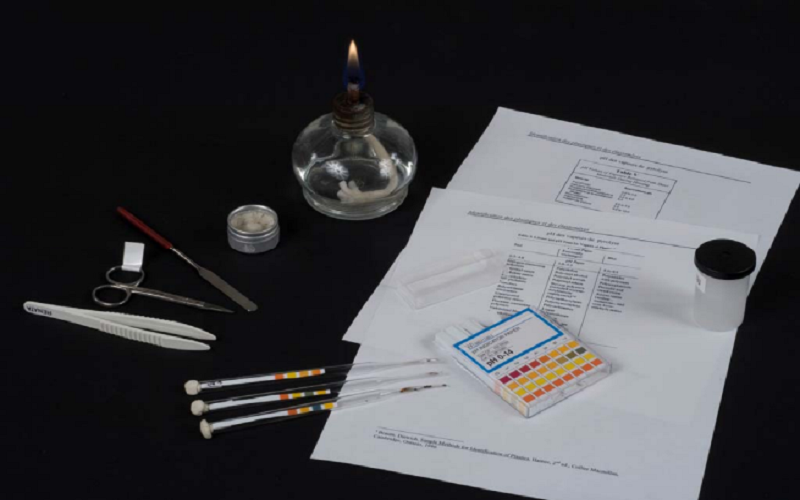
Common Plastics Pyrolysis Products Testing with Litmus and PH Papers | ||
Litmus Paper | ||
Red | Basically no color change | Blue |
PH Test Strip | ||
0.5~4.0 | 5.0~5.5 | 8.0~9.5 |
Halogenated polymers, polyethylene esters, cellulose esters, polyethylene terephthalate, phenolic resins, polyurethane elastomers, unsaturated polyesters, fluoropolymers, rigid fiberboard, polysulfides | Polyolefins, polyvinyl alcohol, polyvinyl formaldehyde, polyvinyl ether, styrene polymers (including styrene-styrene copolymers), polymethacrylates, polymethacrylates, polyethylene oxide, polycarbonates, linear urethanes, phenolic resin rings, oxygen resins, cross-linked polyurethanes | Polyamides, ABS polymers, polybenzonitrile, phenol and cresol resins, amino resins (aniline-melamine- and urea-formaldehyde resins) |
①Slowly heating pyrolysis tubes②Some samples showed weak alkalinity | ||
Conclusion
In exploring the vibrant world of plastic materials, we have utilized a range of identification techniques, from simple burn tests to complex chemical solubility assessments.
These methods not only assist us in differentiating between material types but also provide a profound understanding of plastic behaviors.
If you want to know more about plastic materials for injection molding, you can contact us, FOWMOULD is always at your service.
